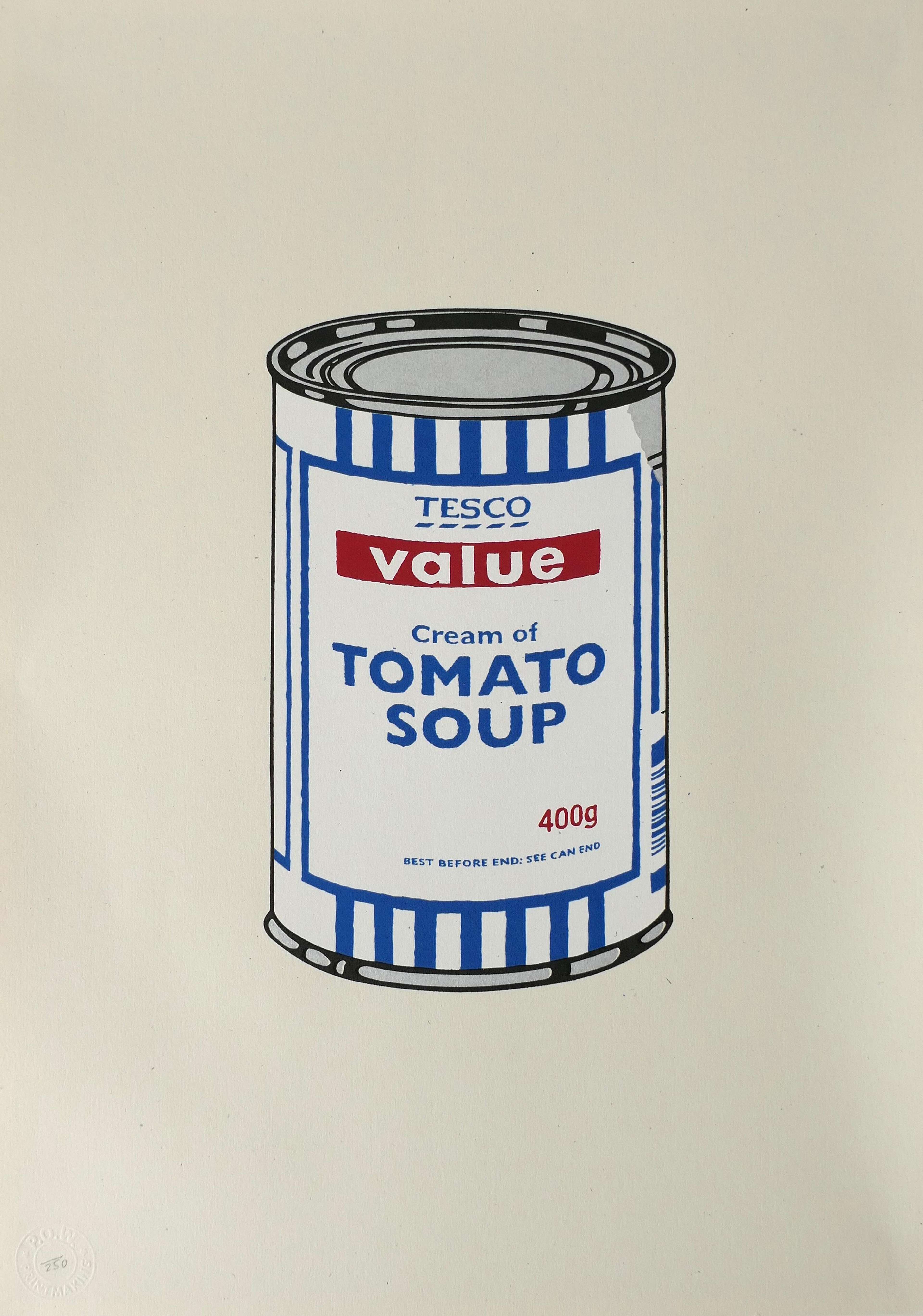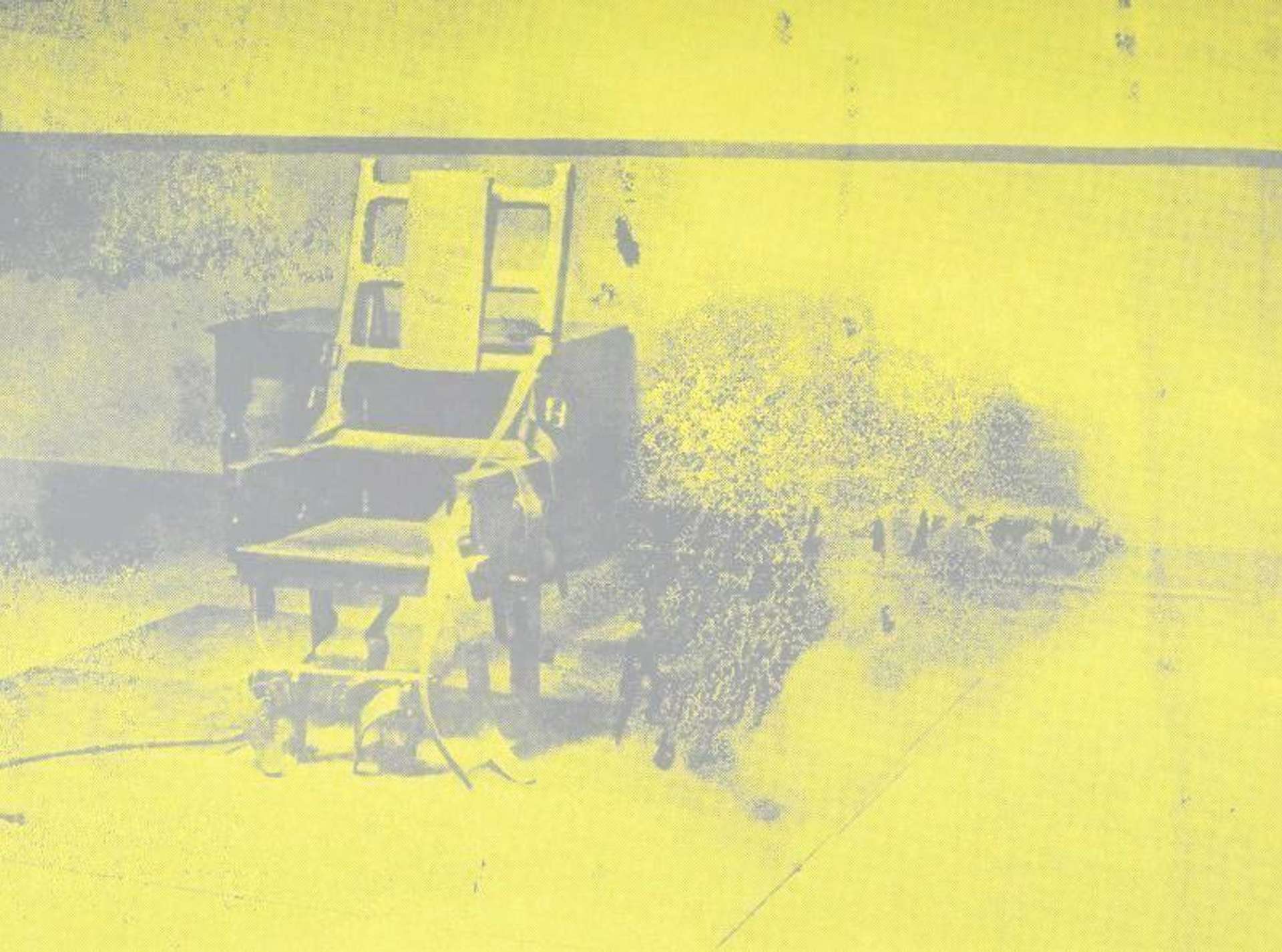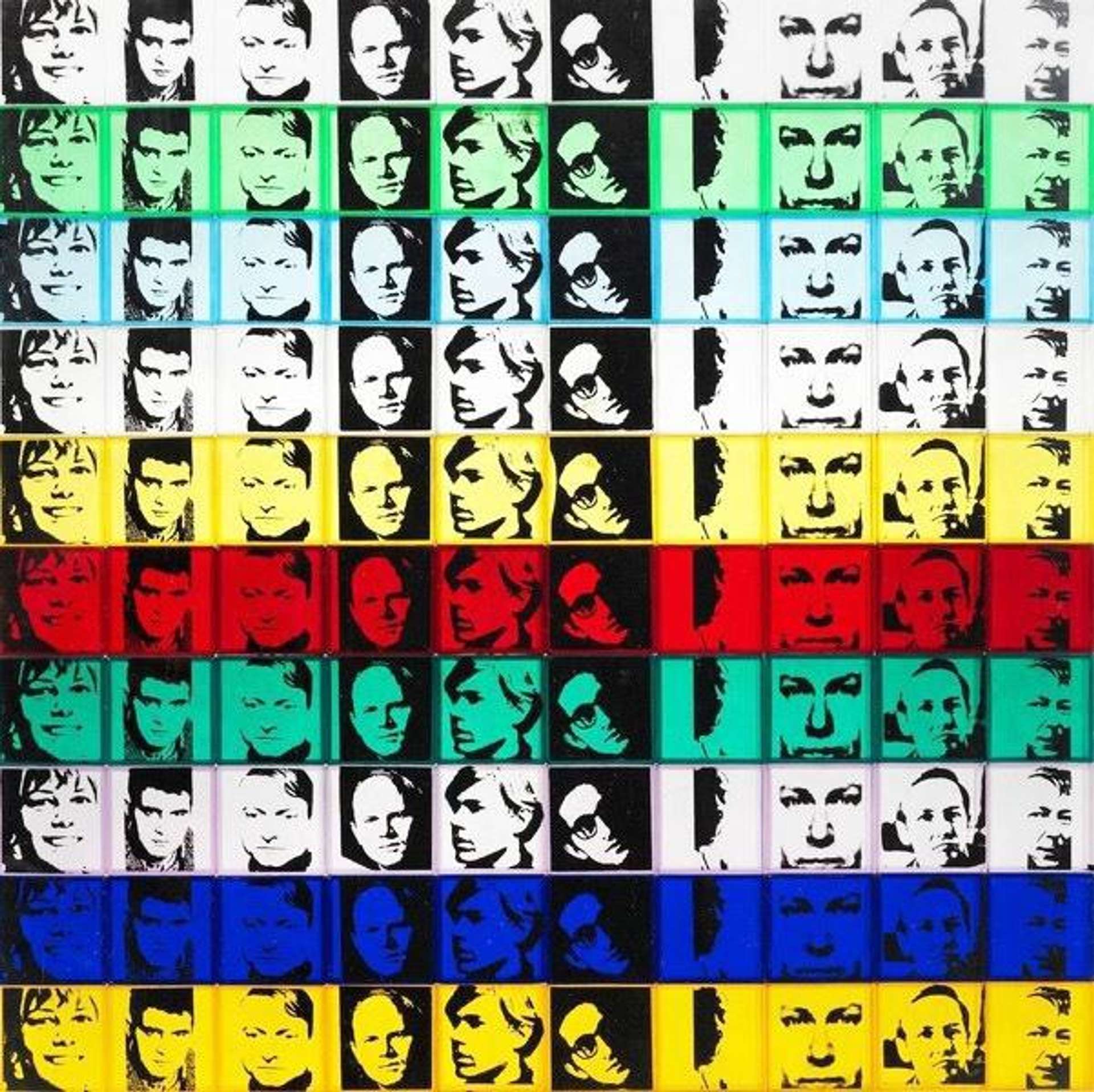The Ultimate Warhol Trivia: 25 Facts For Warhol Fans
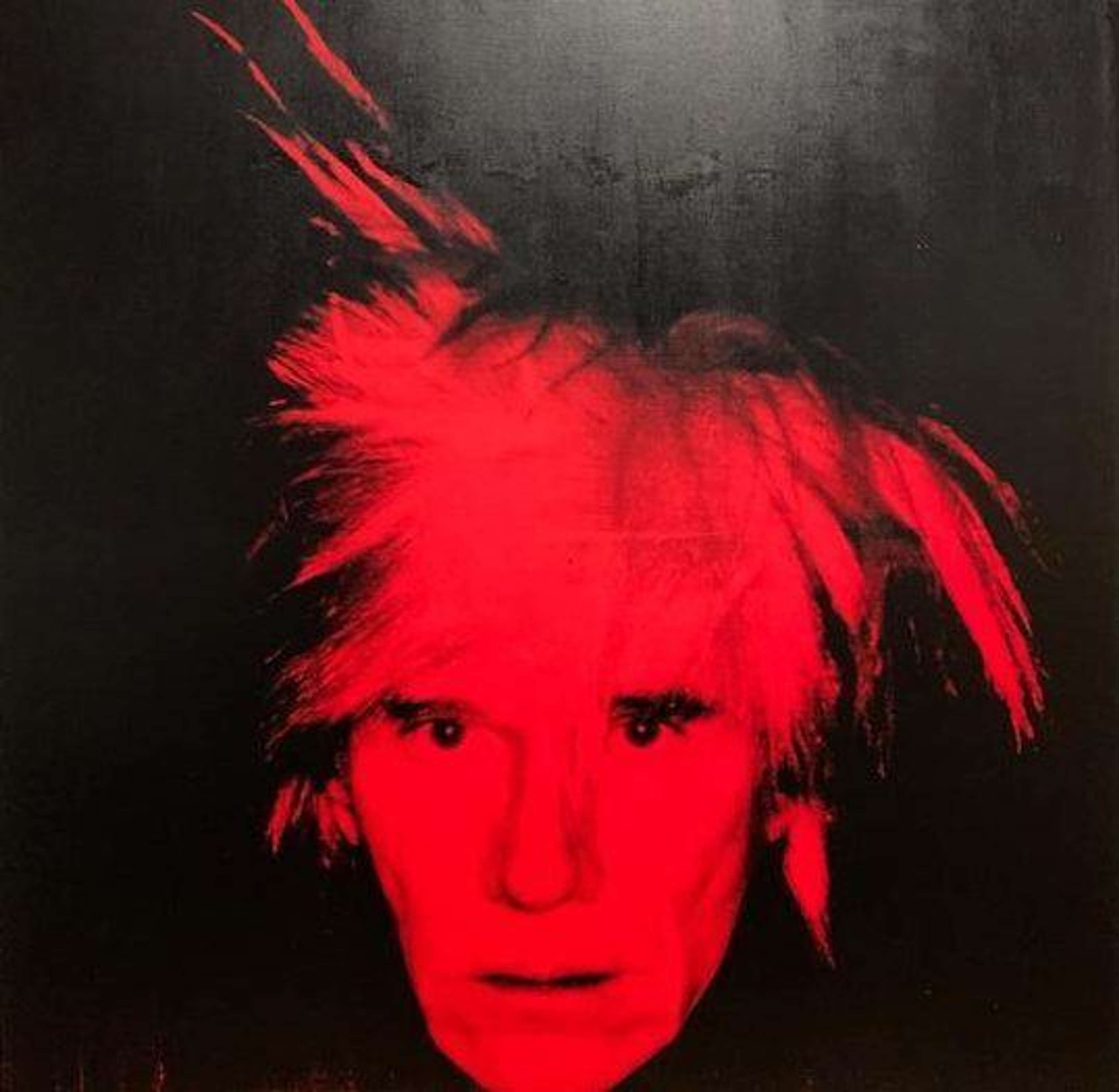 Self-Portrait © Andy Warhol 1986
Self-Portrait © Andy Warhol 1986
Interested in buying or selling
Andy Warhol?

Andy Warhol
487 works
While we are all familiar with the wig, the polaroids and the deadpan statements, there was a hidden side to Andy Warhol that only his closest friends were party to.
Fascinated by celebrity, Warhol successfully built an image of himself that proved impossible to penetrate, letting people think of him as an outsider to the glittering worlds of art, music, film and fashion when in fact he was the centre of the universe that kept these spheres spinning. As his legend has grown over the decades, an image of Warhol as chaste, politically indifferent and instantly successful has become the accepted creation myth. Here we take a look at some lesser known facts about this most beguiling of artists.
Read on for our 25 fun and interesting facts about Andy Warhol:
His success wasn’t immediate
When Irving Blum first staged an exhibition of Warhol’s work, displaying the Campbell’s Soup canvases on grocery shelves in his Ferus Gallery, not everyone was amused. One art critic wrote of Warhol, “This young ‘artist’ is either a soft-headed fool or a hard-headed charlatan,” and Willem de Kooning famously called him “a killer of beauty” while a rival art dealer down the road decided to stage a less than kind homage to the exhibition by displaying actual Campbell soup cans in his gallery. These could be bought at the rate of two for 33 cents, a fraction of the price of Warhol’s paintings which were selling for $100 each. Warhol’s first solo show was considered a flop but it wasn’t long before everyone was talking about this mysterious master of Pop.
 Race Riot © Andy Warhol 1964
Race Riot © Andy Warhol 1964He was political
While he could often appear as a kind of sphinx figure, giving one word answers in interviews and even sending body doubles in his place when asked to give lectures, Warhol preferred to use his art as a medium for his views. As well as revolutionising the process of painting and portraying controversial countercultures in his work, he also made some overtly political statements through works such as Race Riots, which decried the violence used against civil rights protesters, and Vote McGovern, which aimed to make Nixon look as nasty as his policies. It is rumored that the president hated this work so much that he had Warhol audited by the IRS that year, and every year thereafter.
He lives on in the work of Banksy, KAWS and more
While Warhol may not exactly be the trendiest name on the market, his work has undoubtedly influenced the bright young things at the cutting edge of today’s art scene. From Banksy’s Tesco Value Soup Cans to Glenn Ligon’s use of colour, the master of Pop Art’s hand can be seen everywhere. For a rundown of tributes to the Pop artist, see our Top Testaments to Andy Warhol by Urban & Contemporary Artists.
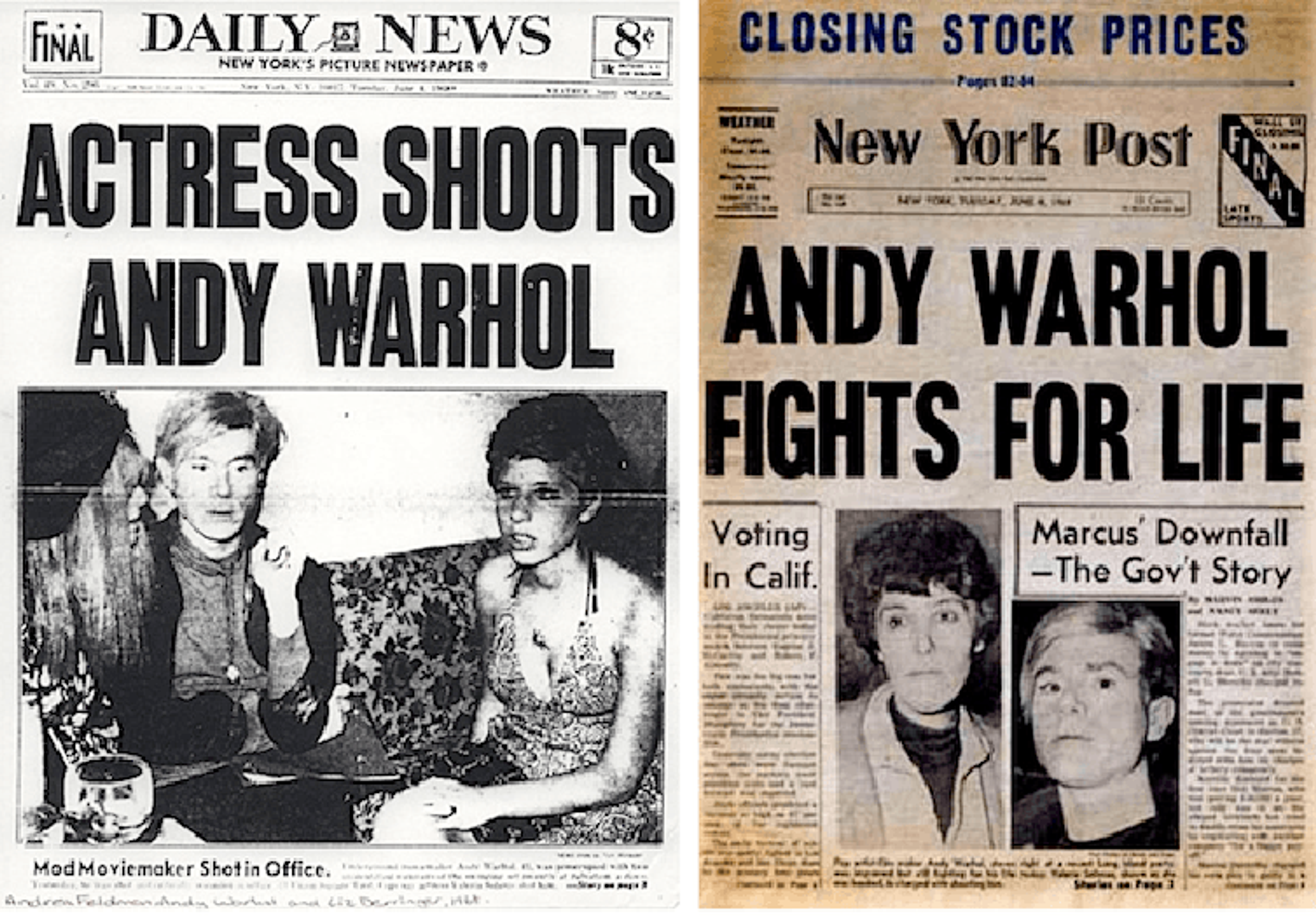 Daily News and New York Post, 4 June 1968
Daily News and New York Post, 4 June 1968Warhol was technically dead for 1.5 minutes
When Valerie Solanas shot Warhol on 3 June 1968, the news made headlines all over the world. When Warhol was taken to hospital doctors had given up hope of saving him, pronouncing him dead until his friend Mario Amaya who was in the bed next to him cried, “Don’t you know who this is? It’s Andy Warhol. He’s famous. And he’s rich. He can afford to pay for an operation. For Christ’s sake, do something.” The doctors immediately got back to work and managed to revive him, despite the bullet having penetrated his esophagus, liver, spleen, intestines and gallbladder. Coincidentally, Robert Kennedy was shot and killed the following night.
He wasn’t a virgin
Warhol is often portrayed as asexual, preferring to observe and portray the scenes of the Factory and the characters in his often erotic films without taking part. This assumption is misleading however; actor John Giorno revealed that he and Warhol were lovers and it is also known that Warhol had a 12 year relationship with decorator Jed Johnson. As Wayne Koestenbaum wrote, “How gay was Warhol? As gay as you can get.” Apparently, for Warhol, “everything is sexual … Movement is sexual. Stillness is sexual. Looking and being looked at are sexual. Time is sexual.”
He was religious
Warhol often appropriated religious imagery in works such as The Annunciation and Saint Apollonia, and while it might seem like he was having fun with their kitsch value, his faith was in earnest. He regularly attended church on Lexington Avenue, finding comfort in the rites and rituals of Catholicism, and is said to have had a crucifix in every room of his house. This attachment to religion says much about his close relationship with his mother with whom he lived until a year before she died, even when he was successful enough to buy a townhouse of his own. Warhol was also very influenced by the death of his father; one of his earliest paintings, Living Room, depicts the room where his body was laid out for three days, and this preoccupation with death and religion was never far from his later work.
 Wigs © Andrew Dunkley, Tate photography
Wigs © Andrew Dunkley, Tate photographyWarhol's wig was not just a signature look
While it might seem like an easy way to create a signature look, Warhol’s wearing of a wig was less of a statement and more a sign of self consciousness. When he was younger he suffered from mental health problems which caused him to lose much of the hair on his head and body. As well as covering his insecurities the wig worked to create a character out of Warhol, as easily recognisable as the famous people whose faces he was screen printing. This was not always to his advantage however, many thought the wig was “embarrassing”, making him look like a “creep”. In 2006, a silver wig was just one of the items sold by Warhol’s nephew at auction, where it fetched over $10,000.
 Ladies And Gentlemen (F. & S. II.133) © Andy Warhol 1975
Ladies And Gentlemen (F. & S. II.133) © Andy Warhol 1975He championed drag and trans culture
The Factory was a haven for figures from various subcultures and minorities as well as those challenging the gender binary and with series such as Ladies And Gentlemen Warhol brought drag queens and transgender people – such as Marsha P Johnson, a champion of gay and trans rights who played an important part in the Stonewall Riots – into his art and films. He even appears in drag himself in one of his polaroid self portraits.
 Saturday Review, October 1972
Saturday Review, October 1972He collected cookie jars
It is perhaps unsurprising that the king of kitsch also had a vast collection of cookie jars. These were sold for £250,000 at the Warhol estate sale at Sotheby’s after his death in 1988.
 a, A Novel © Andy Warhol, Random House Edition 2009
a, A Novel © Andy Warhol, Random House Edition 2009Andy Warhol wrote a novel
As well as the much quoted Philosophy of Andy Warhol, Warhol is known for writing a number of books – including 25 Cats Named Sam and Wild Raspberries – and even a novel entitled a, A Novel, which is said to be a response to James Joyce’s Ulysses. The book follows 24 hours in the life of Ondine, an actor who regularly appeared in Warhol’s films and a firm fixture at The Factory.
 Self-Portrait © Andy Warhol 1986
Self-Portrait © Andy Warhol 1986He wasn’t really an outsider at all
While Warhol is often painted as a ‘freak’ who appropriates and portrays the beautiful and the damned from the outside, the artist was in fact a very fashionable figure. He was just as at home with politicians and heiresses as drag queens and drifters, as demonstrated by little known rushes Warhol shot in the 70s that show John F. Kennedy Junior play fighting on a beach and his presence at parties which also included ‘Lady Bird’ Johnson, first lady of the United States from 1963 to 1969.
 Warhol, Interview Magazine
Warhol, Interview MagazineHe was the original influencer
From brand partnerships to signature looks – not to mention repetitive content – many of today’s hottest influencers seem to be taking a leaf out of Warhol’s book when it comes to self promotion. Warhol's enigmatic and double-edged identity was always at the heart of his art— he questioned the culture of celebrity even while he became and maintained himself as one among A-list circles—so we wonder what he would make of the ubiquity of celebrity in the age of social media.
Many of Warhol's celebrity acquaintances feature famously in his art: read our 'Icons of Style, Screen and Silkscreen: Who Did Andy Warhol Paint?' article here.
 A Gold Book (F. & S. IV.106-124) © Andy Warhol 1957
A Gold Book (F. & S. IV.106-124) © Andy Warhol 1957He’s surprisingly affordable
While his works on canvas reach astronomical prices at auction, many of Andy Warhol’s prints remain extremely accessible to collectors just starting to build their collection. Copies of his exquisite A Gold Book start at just £1000 while his Fish Wallpaper can be acquired for as little as £7000. Over the last 5 years around 40% of Warhol lots at auction were worth between $0 and $10k. Read more.
If you want an entertaining introduction to Warhol's art market in 2023, why not listen to our MyArtBroker Talks: Collecting Andy Warhol podcast?
![Double Elvis [Ferus Type] by Andy Warhol - MyArtBroker](https://cdn.sanity.io/images/dqllnil6/production/11e194a043312cf27a8f622ad57476f8e08a63d1-337x525.jpg?w=3840&q=60&auto=format) Double Elvis [Ferus Type] © Andy Warhol 1963
Double Elvis [Ferus Type] © Andy Warhol 196375% of works by Warhol sell for over $1 million at auction
Having said that, most of Warhol’s oeuvre lies well beyond the $1million mark. Usually these lots consist of his very large silkscreens printed onto canvas, rather than paper which was used for larger edition sizes. Many works are available on paper, and are much more affordable.
If you want to find out more about Andy Warhol's most recent success at auction in 2023, we recommend reading our Auction Highlights: Andy Warhol article.
 Andy Warhol and the Beckhams © MyArtBroker
Andy Warhol and the Beckhams © MyArtBrokerHe started the trend of being photographed with a celebrity
According to Myra Scheer, it was Warhol who first thought to put himself in the frame with the stars and sirens of Studio 54. If he was alive today, just imagine who he might be hanging out with.
Not all his ideas were great
According to his closest friends Warhol was always coming up with ideas, taking inspiration from the world around him and translating it into his art with his signature ingenuity. Some of his ideas, however, were not so great; one time he is said to have declared that ‘Someone should invent a sandwich with a drink in it.’
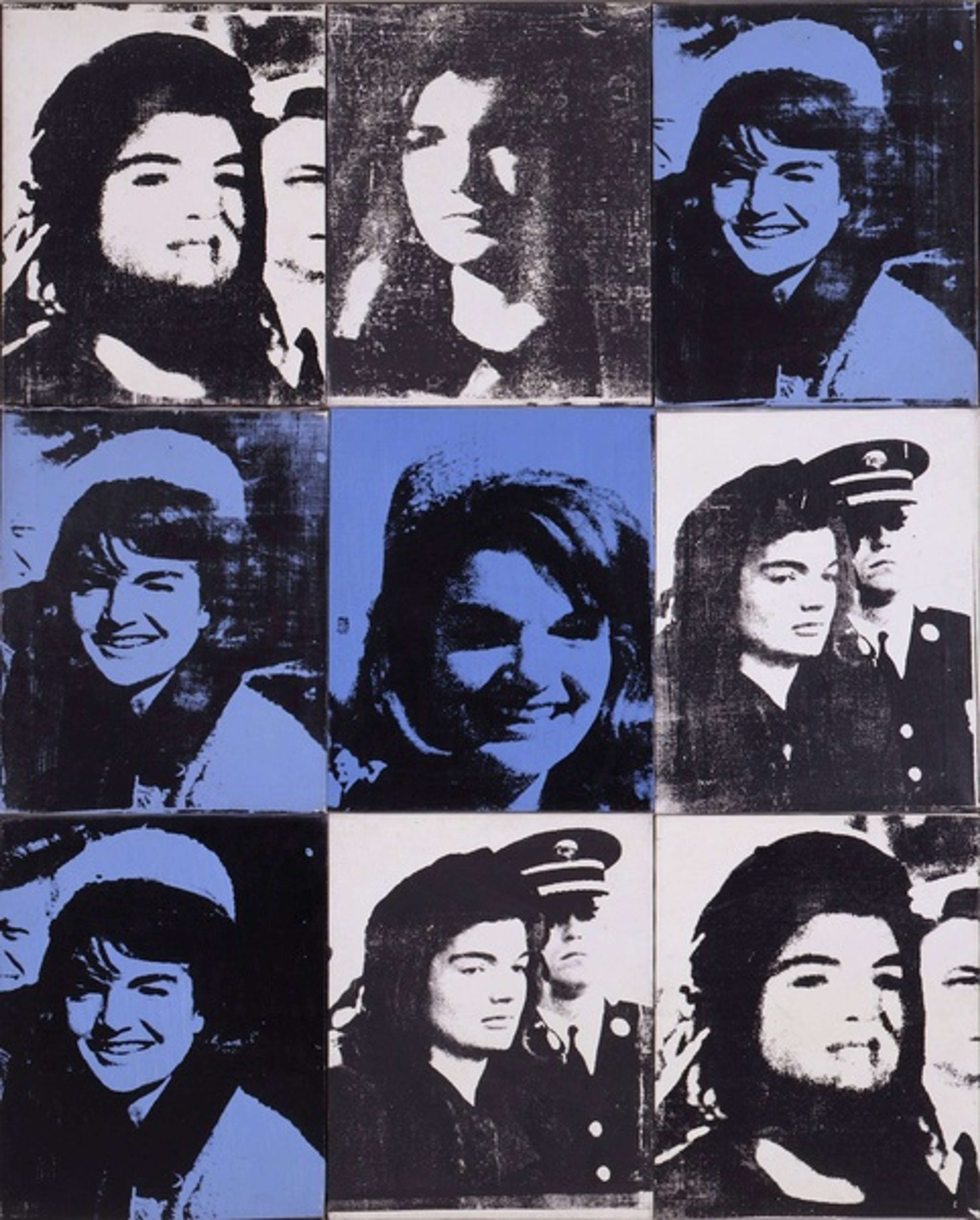 Nine Jackies © Andy Warhol 1964
Nine Jackies © Andy Warhol 1964Warhol’s first ever museum show was in 1965
55 years before the Tate’s latest major retrospective, and two years after President Kennedy was shot, Warhol enjoyed his first museum show at the Institute of Contemporary Art in Philadelphia. The opening night was mobbed by over 1,600 fans keen to get a look at Warhol and his glamorous entourage.
Today, Warhol's works are exhibited internationally in prestigious galleries and museums, including the MoMA and the Metropolitan Museum in New York.
 Marilyn (Diptych) © Andy Warhol 1962
Marilyn (Diptych) © Andy Warhol 1962In 1964 someone shot a stack of Warhol's Marilyns
One day at the Factory Dorothy Podber asked Warhol if she could ‘shoot’ a stack of four Marilyn paintings, and Warhol, believing she meant to photograph them, consented. When she got her pistol out he was a little surprised, however the damage done didn’t put him off; they were later exhibited with the holes painted over with makeup and a new title, Shot Marilyn.
Due to the brilliance of the anecdote associated with Warhol's Shot Marilyn paintings, they sell for even more than the ordinary Marilyns, which are already among Warhol's most iconic works. In May 2022, the auction sale of Shot Sage Blue Marilyn (1964) took place at Christie's New York, selling for an astonishing US$195 million (£158 million). The work became the most expensive piece of 20th-century art ever sold, a record previously held by Pablo Picasso's Les Femmes d'Alger (Version O), which sold for $179.4 million, also at Christie’s, in May 2015
He officially ‘retired from painting’ in 1966
Declaring that Pop Art was ‘dead’, Warhol staged an exhibition at Leo Castelli’s gallery in 1966 to celebrate his retirement from painting. The show consisted of one room full of silver helium balloons in the shape of pillows, originally created for Merce Cunningham’s Rain Forest, while the other was covered in his pink, yellow, and black cow wallpaper.
He dreamed of opening a restaurant
While he may have illustrated a cookbook with Suzie Frankfurt entitled Wild Raspberries, Warhol also dreamed of opening a restaurant inspired by the 1950s ‘automat’ model where food was served by machines. He wanted to call it the ‘Andy-mat’.
 Cats Series @ Andy Warhol 1954
Cats Series @ Andy Warhol 1954He wasn’t just into cats
Though he may have made a book called 25 Cats Named Sam And One Blue Pussy Warhol was also a dog lover. His sausage dog Archie was famously immortalised in print but he also had a fondness for pugs.
 Campbell's Soup Cans © Andy Warhol
Campbell's Soup Cans © Andy WarholThe Soup Cans were not actually Andy’s idea
As Warhol was attempting to make the jump from commercial to fine art he employed friend and interior designer Muriel Latow to come up with some ideas for paintings. The first idea she gave him was to paint dollar bills, and the second became the Campbell’s Soup series which now sell for well over £1 million.
Read our 10 facts about Warhol's Campbell’s Soup Cans here.
 Donald Trump, Twitter, 2014
Donald Trump, Twitter, 2014Warhol called Trump a ‘butch guy’ in his diaries
Strange but true, in 1981 Donald Trump paid a visit to the Factory. The meeting was set up by Warhol’s friend and art director of Interview magazine, Marc Balet who thought Warhol could do a portrait of the Trump Tower to hang in its lobby. Later Warhol wrote in his diaries, ‘It was so strange, these people are so rich. They talked about buying a building yesterday for $500 million or something. […] He’s a butch guy. Nothing was settled, but I’m going to do some paintings anyway, and show them to them.’ He did the paintings, but Trump never bought them, which then triggered another diary entry: ‘I think Trump’s sort of cheap, though, I get that feeling.’
 The Philosophy Of Andy Warhol (From A to B & Back Again) © Andy Warhol, Harcourt Brace Jovanovich 1975
The Philosophy Of Andy Warhol (From A to B & Back Again) © Andy Warhol, Harcourt Brace Jovanovich 1975Lou Reed made a tape of songs just for Andy
Taking inspiration from Andy Warhol’s 1975 book The Philosophy of Andy Warhol: From A to B and Back Again, Lou Reed made a series of songs meant for Andy’s ears only that were recently discovered in the Andy Warhol Museum archive. The recording also features Reed accusing Warhol of being manipulative and even saying that it would have been better if the artist had died from the gunshot wound inflicted upon him by Valerie Solanas, though he apologises for this at the end of the song.
The Factory moved around
While it is always referred to in singular as The Factory, there were in fact three in existence between 1962 and 1984. The first one, whose walls were covered in aluminium foil, was known as the Silver Factory and was located at 231 East 47th Street, in Midtown Manhattan. Warhol left it in 1967 when the building was scheduled to be demolished and set up in the Decker Building at 33 Union Square West. the Factory remained there until 1973 when it moved to 860 Broadway.

